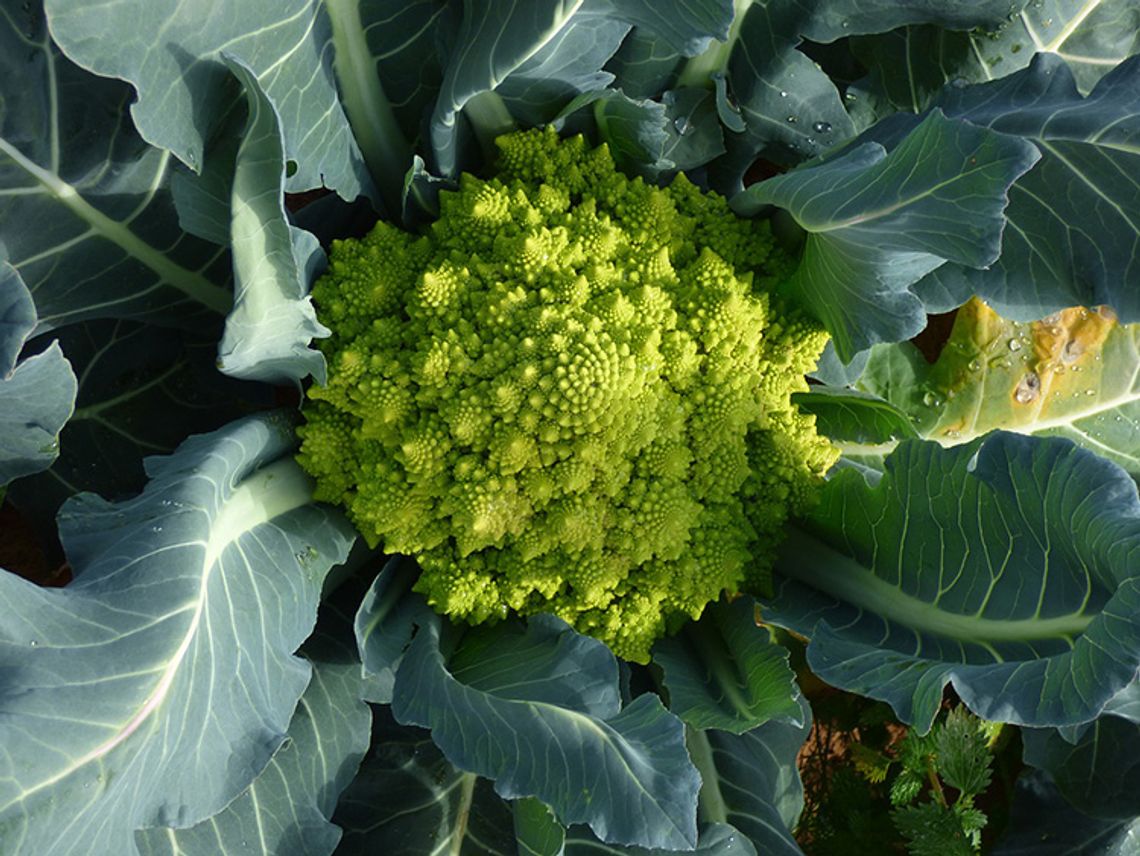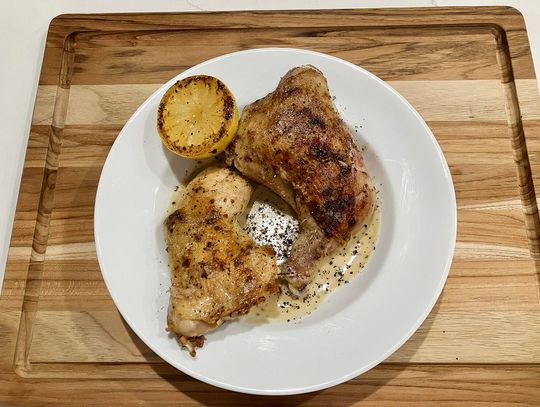Working with local farmers means that I sometimes come across some weird produce. There are unintentional “volunteers” that pop up every year that reflect cross-pollination. Like the strange squash that looked like a pumpkin on the top and watermelon on the bottom. Sometimes plants grow where you least expect them to, generally a result of a bird or rodent dropping a seed. Last year, there was quite a substantial harvest of odd pumpkins along the riverbank at the Fallon golf course. The space alien vibe of kohlrabi in its “normal” form is the perfect entry point to determine if someone has been a part of a farm share or CSA program. You just don’t ever see kohlrabi at Safeway. But the weird vegetable that has me all at atwitter right now is Romanesco.
Last year, I tried to order some Romanesco from a farm west of the Sierras, but they sold out. Our subscribers were bummed. The substitution of closely related baby broccoli just wasn’t the same. One subscriber, in particular, expressed that he was just so excited about “eating fractals.” For any of you out there who are nerdy like me, consider this an official invitation to spiral down a rabbit hole about fractals, Fibonacci, and the golden ratio. For those slightly less nerdy: fractals are pretty, they exist in all sorts of places in nature, and are formed when you repeat a pattern over and over again in increasingly large dimensions.
We have been more successful procuring Romanesco this winter. Not only is this strange veggie a head-trip, but it is also nutritious and delicious. Romanesco belongs to the same family of vegetables as cabbages, collard greens, broccoli, cauliflower, and beets. Maybe. Even professional plant taxonomists can’t figure it out. Some classify Romanesco with broccoli (Italica) while others sort it with cauliflower (Botrytis).
Here are some hints on how to pick a good head of Romanesco:
-
Choose the head with a firm stem.
-
If there are still leaves attached around the head, that is a good sign.
-
Pick the head with bright, vibrant colors, deep greens, or purples.
-
The head should feel almost heavier than you would expect for its size.
How to store Romanesco:
-
Leave it whole and unwashed until you are ready to use it.
-
Store refrigerated in a Ziplock bag.
-
Use it within a week of purchase.
Romanesco can be prepared and served in a very similar way to broccoli and cauliflower. But I think it would be a waste to just cut it into florets and dip it in ranch. To maintain the bright green color, we recommend that you blanch and shock the florets by letting them briefly cook in boiling salted water then immersing the florets in ice water to stop the cooking process. Florets can be added to pasta, mixed into salads, or served independently as a side dish. I smoked my Romanesco until it was crispy and charred. Delicious! Romanesco just begs for strong flavors, here is a tasty recipe to try.
Charred Romanesco with Anchovies
By Travis Lett
INGREDIENTS:
½ cup olive oil, divided
1 large onion, minced
1 large carrot, minced
1 celery stalk, minced
4 Fresno chiles or jalapeños, thinly sliced into rounds, seeded
Kosher salt
3 pounds Romanesco or regular cauliflower (about 2 medium heads), cut into florets
4 anchovy fillets packed in oil, drained
½ cup dry white wine
Freshly ground black pepper
½ cup torn fresh mint leaves
DIRECTIONS:
-
Heat ¼ cup oil in a medium saucepan over medium heat. Add onion, carrot, celery, and chiles; season with salt and cook, stirring occasionally, until vegetables are very soft but not brown, 12–15 minutes. Let sofrito cool.
-
Preheat oven to 450°. Heat 2 Tbsp. oil in a large skillet over medium-high heat. Add half the Romanesco and cook, undisturbed, until deeply browned about 4 minutes. Transfer to a roasting pan. Repeat with remaining 2 Tbsp. oil and remaining Romanesco. Add sofrito, anchovies, and wine to roasting pan; season with salt and pepper and toss to combine.
-
Roast, tossing halfway through, until Romanesco is soft, and liquid is mostly evaporated 25–30 minutes, season with salt and pepper and top with mint








Comment
Comments